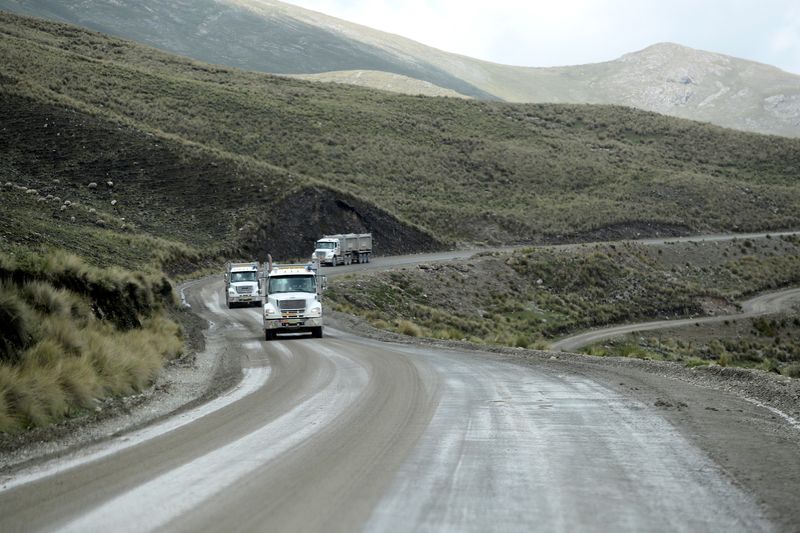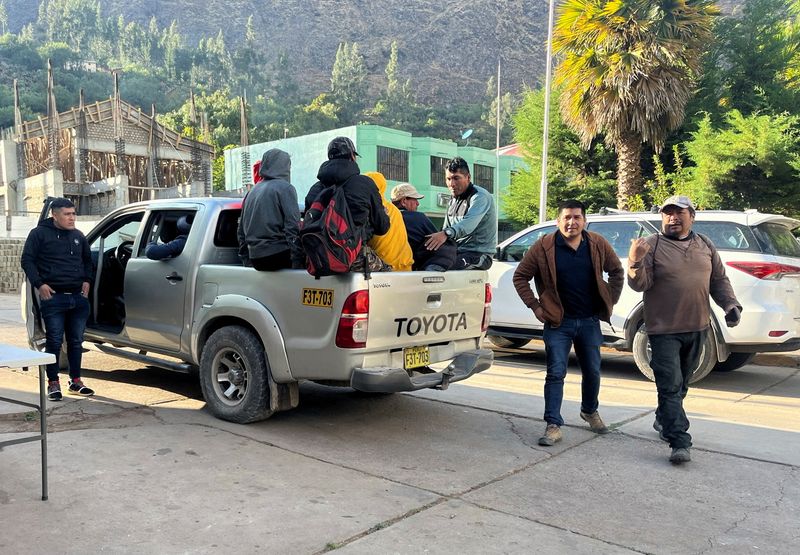By Marco Aquino
LIMA (Reuters) - Surging copper prices this year have brought startling growth in the number of trucks carrying copper from illegal mines in Peru, jamming roads, causing accidents and creating hazardous conditions especially after dark along the Andean country's key "mining corridor" highway, industry sources told Reuters.
With copper demand soaring as the world rapidly moves toward electric vehicles and clean energy, illegal mining has been booming. Trucks linked to artisan and illegal mining operations have been crowding vehicles from mines like Chinese-controlled MMG Ltd's Las Bambas, Hudbay's Constancia and Glencore (LON:GLEN)'s Antapaccay.
Mining sources told Reuters about alarming growth in delays and stoppages on the 482-kilometer highway, a partially paved road that is essential for trucks of copper concentrate getting to the coast.
"There are as many (trucks) or even more than ours," said a source close to Las Bambas in Peru's southern Apurimac region, the country's fifth largest copper producer last year. "It complicates life for all the mines using the corridor."
Informal mining trucks were involved in at least 11 accidents in May along the highway, according to a document shared with Reuters by a source at Canada's Hudbay, which included images showing damage to the roadway.
Burgeoning stand-offs between big mines and artisan miners have complicated government efforts to spur investment and production to bolster the economy after Peru's long-held position as the No. 2 global copper producer was snatched away by rival Congo. Chile is No. 1, and Peru remains second for shipments.
The Hudbay source said there were around 120 trucks daily from artisan mining operations, some of which operate with permits and others illegally. The trucks were damaging the roadway, causing accidents and pollution.
"While we've seen this problem for some years, the increase in truck numbers in 2024 is startling," the source added, saying the mine had formally sought government intervention to strengthen inspection and controls on the road.
Peru's Ministry of Energy and Mines and the regional Cusco government did not respond to requests for comment.
A source close to Antapaccay said artisan and wildcat trucks often traveled at night to avoid detection.
Peru's government has tried to regulate artisan mining sector more by tightening up on permitting. Small-scale copper and gold miners have pushed back and protested, gumming up the government's plans to overhaul the sector.
'NO CONTROL, NO MONITORING'
Local community groups told Reuters the recent boom meant more uncontrolled activity along the Andean region's roads.
"The flow is strong, sometimes too much. It's the same amount again as Las Bambas, an average of more than 100 trucks a day," Robertson Pacheco, leader of a local defense front in the Velille district of Cusco told Reuters by phone.
"Informal miners have no control, there's no monitoring."
The mining corridor links mines in the regions of Apurímac, Cusco and Arequipa. There are some $12 billion of new projects being developed along the highway, such as Southern Cooper's Los Chancas and First Quantum's Haquira.
For months, Pacheco said, his neighborhood has requested a meeting with Cusco authorities to promote a "dialogue or agreement" with artisan miners, but he has had no response.
The government, which has registered some 86,800 permits for artisan miners throughout Peru, claims that illegal mining, mainly gold, is worth some $3-4 billion per year and has become more lucrative than trafficking in illegal drugs.
"There is definitely a problem of increased traffic in the mining corridor," said Lima-based mining conflict analyst Iván Arenas, adding that illegal mining, transportation and processing of metals was rising fast.

"This supply chain will only continue to grow."
(This story has been refiled to fix a typo in paragraph 11)
